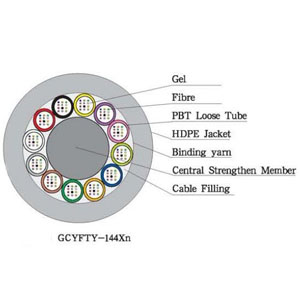-

- Sopto Home
-

- Special Topic
-

- Fiber Optics knowledge
-

- Some Knowledge about Fiber Optic Cables
Fiber Optics knowledge
- Maintained Methods of Fusion Splicer Parts
- How to Use the Fiber Optic Cleaver?
- What are Fixed Attenuators & Variable Attenuators?
- Deployable Fiber Optic Systems for Harsh Mining Environments
- Developing Miniature Fiber Optic Cable Has Become the Trend
- Fiber Optic Cleaning Procedures
- 6 Steps to Selecting a Fiber Optic Cable
- Signal Attenuation Introduction
- How Fiber Transmission Works?
SOPTO Special Topic
Certificate



Guarantee
Except products belongs to Bargain Shop section, all products are warranted by SOPTO only to purchasers for resale or for use in business or original equipment manufacturer, against defects in workmanship or materials under normal use (consumables, normal tear and wear excluded) for one year after date of purchase from SOPTO, unless otherwise stated...
Return Policies
Defective products will be accepted for exchange, at our discretion, within 14 days from receipt. Buyer might be requested to return the defective products to SOPTO for verification or authorized service location, as SOPTO designated, shipping costs prepaid. .....
Applications
Fiber Optis can be used in so many fields:
Data Storage Equipment
Interconnects,Networking
Gigabit Ethernet
FTTx, HDTV,CATV
Aerospace & Avionics
Data Transfer Tests
Network Equipment
Broadcast Automotive
Electronics,Sensing
Oil & Gas, Imaging
Outside Plant,Central Office
Harsh Environment
Data Transmission
Illumination,Institutions
Ship to Shore,Education
Simulation,Military,Space
Unmanned Aerial Vehicles
Semiconductor Equipment
Diagnostics & Troubleshooting
Premise Networks Carrier Networks
Independent Telecommunication Providers
SOPTO Products
- Fiber Optic Transceiver Module
- High Speed Cable
- Fiber Optical Cable
- Fiber Optical Patch Cords
- Splitter CWDM DWDM
- PON Solution
- FTTH Box ODF Closure
- PCI-E Network Card
- Network Cables
- Fiber Optical Adapter
- Fiber Optical Attenuator
- Fiber Media Converter
- PDH Multiplexers
- Protocol Converter
- Digital Video Multiplexer
- Fiber Optical Tools
- Compatible
Performance Feature
Fiber Optics knowledge
Recommended


Some Knowledge about Fiber Optic Cables
In the 1980s, fiber optic cables were developed. The first transatlantic telephone cable to use optical fiber was TAT-8, which went into operation in 1988. A fiber-optic cable comprises multiple pairs of fibers. Each pair has one fiber in each direction. TAT-8 had two operational pairs and one backup pair.
Modern optical fiber repeaters use a solid-state optical amplifier, usually an Erbium-doped fiber amplifier. Each repeater contains separate equipment for each fiber. These comprise signal reforming, error measurement and controls. A solid-state laser dispatches the signal into the next length of fiber. The solid-state laser excites a short length of doped fiber that it acts as a laser amplifier. As the light passes through the fiber, it is amplified. This system also permits wavelength-division multiplexing, which dramatically increases the capacity of the fiber.
The Micro-Cable for Fast Installation
Repeaters are powered by a constant direct current passed down the conductor near the center of the cable, so all repeaters in a cable are in series. Power feed equipment is installed at the terminal stations. Typically both ends share the current generation with one end providing a positive voltage and the other a negative voltage.
A virtual earth point exists roughly half way along the cable under normal operation. The amplifiers or repeaters derive their power from the potential difference across them. The optic fiber used in undersea cables is chosen for its exceptional clarity, permitting runs of more than 100 kilometers between repeaters to minimize the number of amplifiers and the distortion they cause.
The rising demand for these fiber-optic cables outpaced the capacity of providers such as AT&T. Having to shift traffic to satellites resulted in poorer quality signals. Such field monitoring is important because the glass of fiber-optic cable is less malleable than the copper cable that had been formerly used. The ships are equipped with additional propellers that increase maneuverability. This capability is important because fiber-optic cable must be laid straight from the stern (another factor copper cable laying ships did not have to contend with).
For more info, please browse our website. For purchasing more fiber optic assembly products, please contact a Sopto representative by calling 86-755-36946668, or by sending an email to info@sopto.com.





-180x180.JPG)

